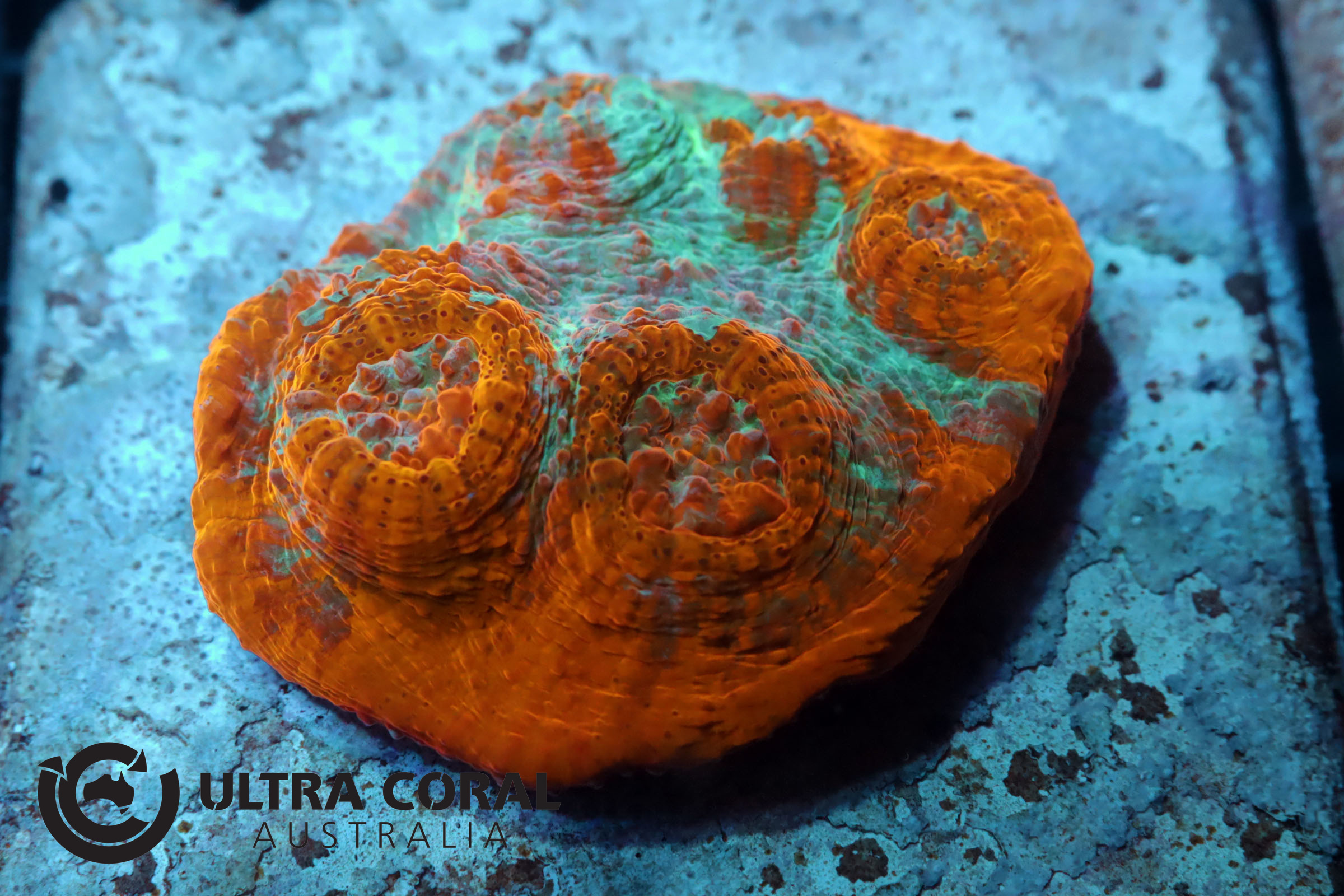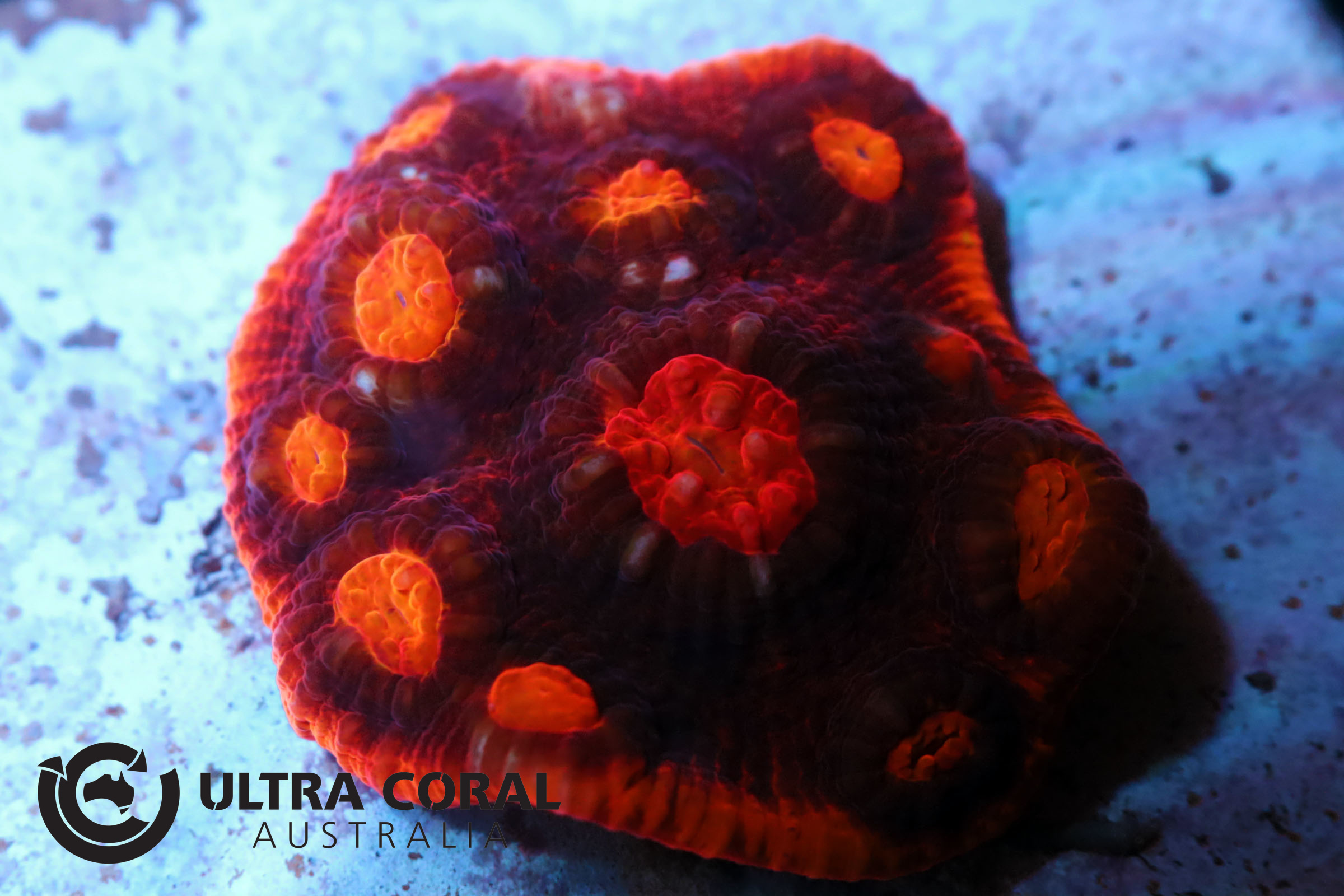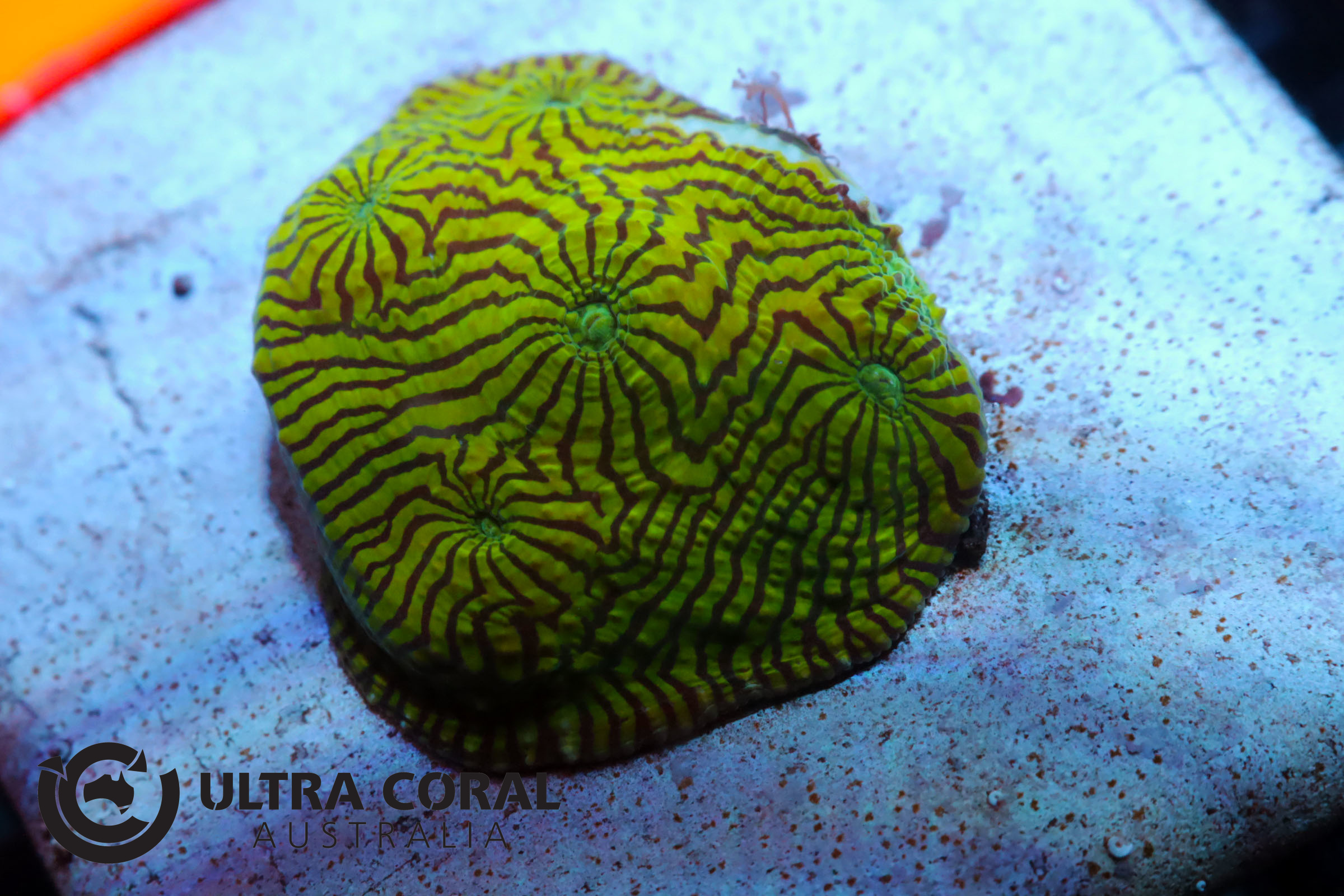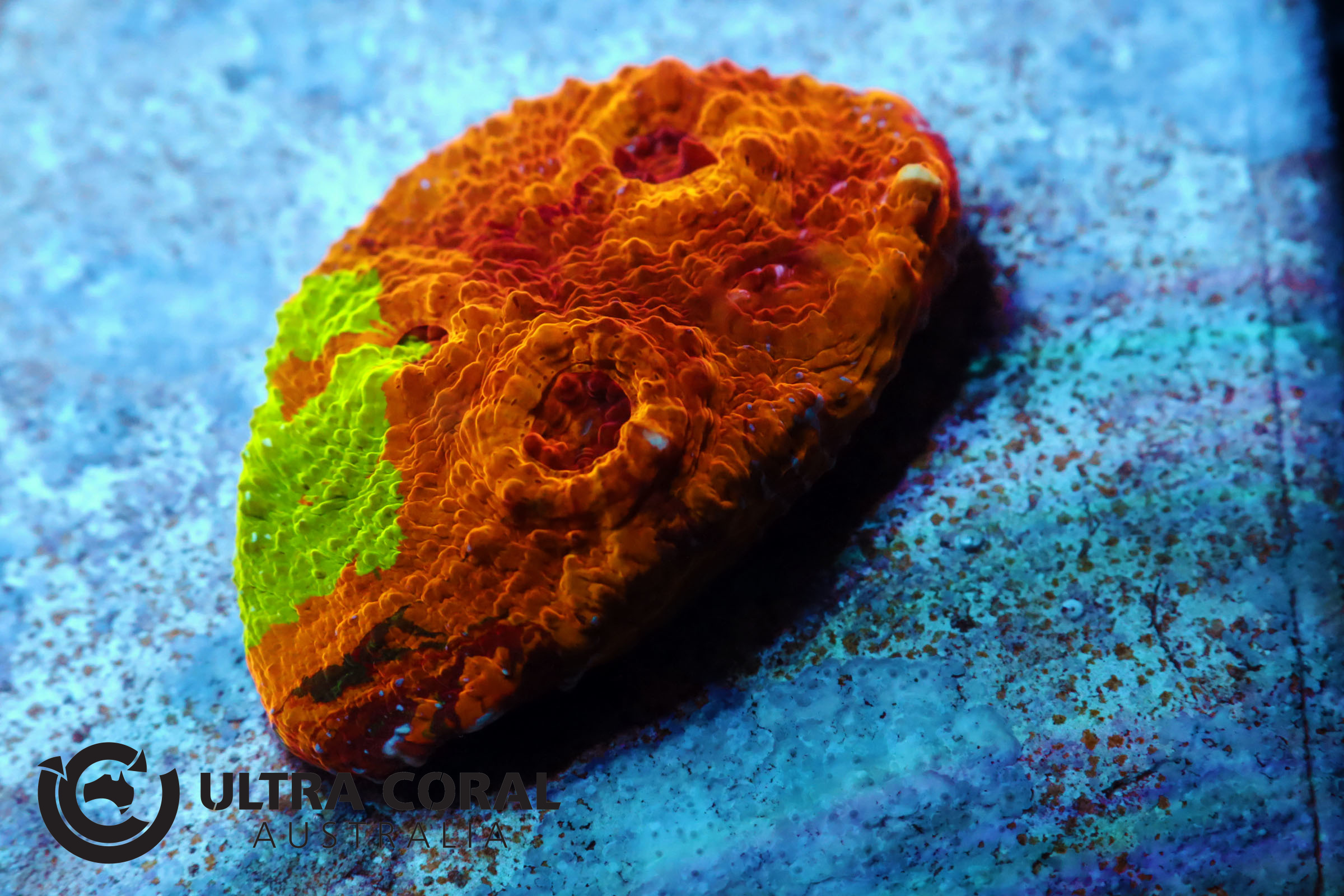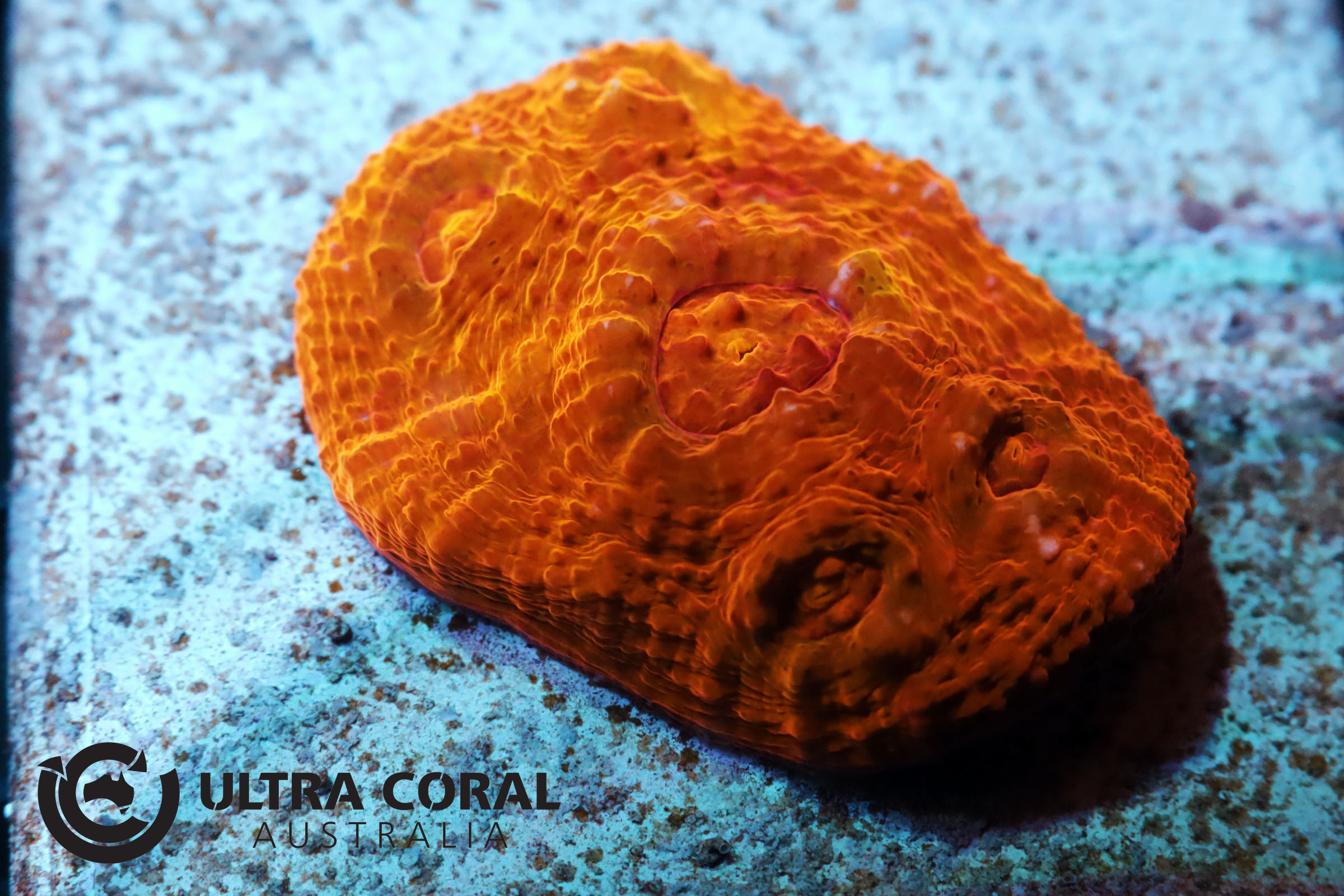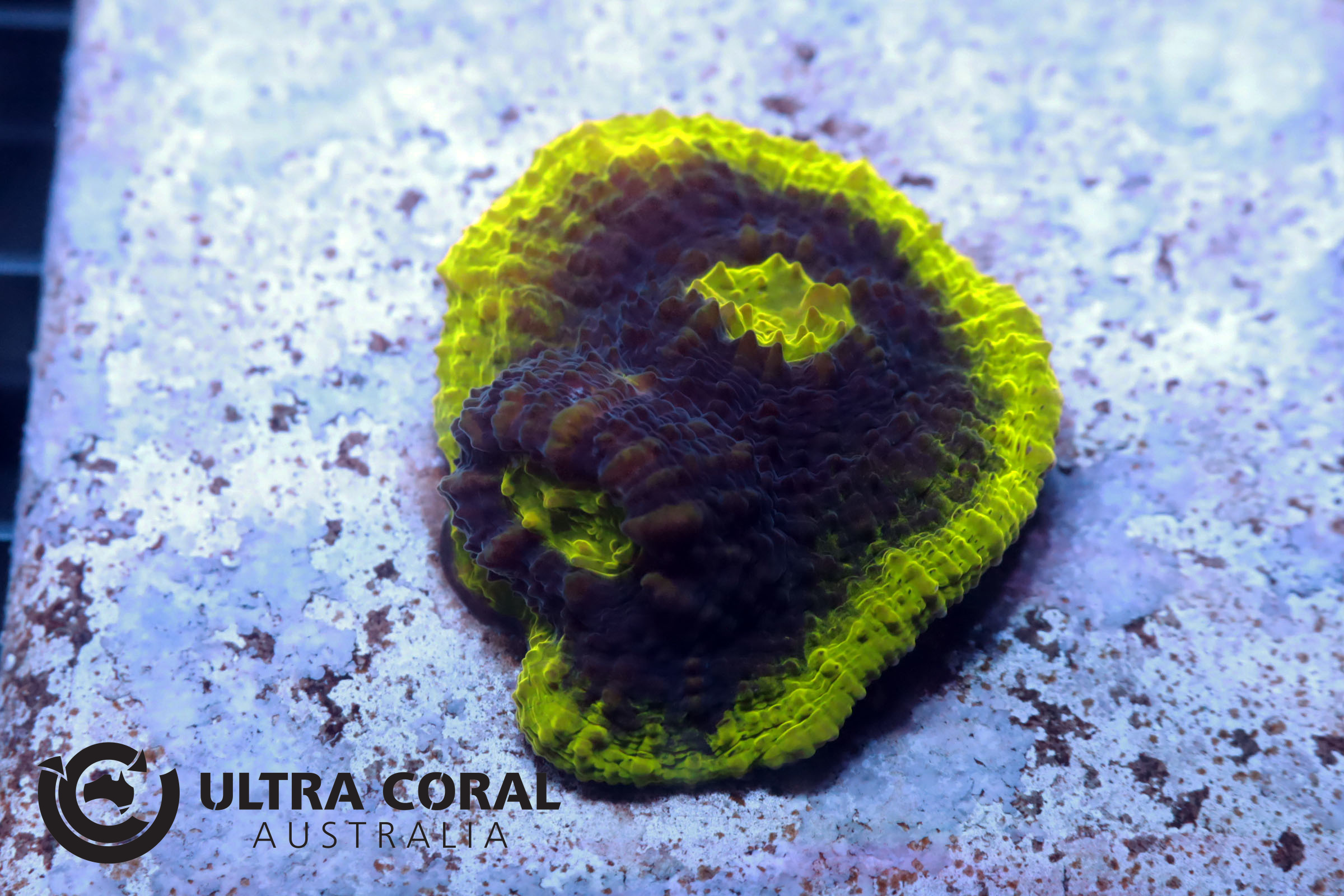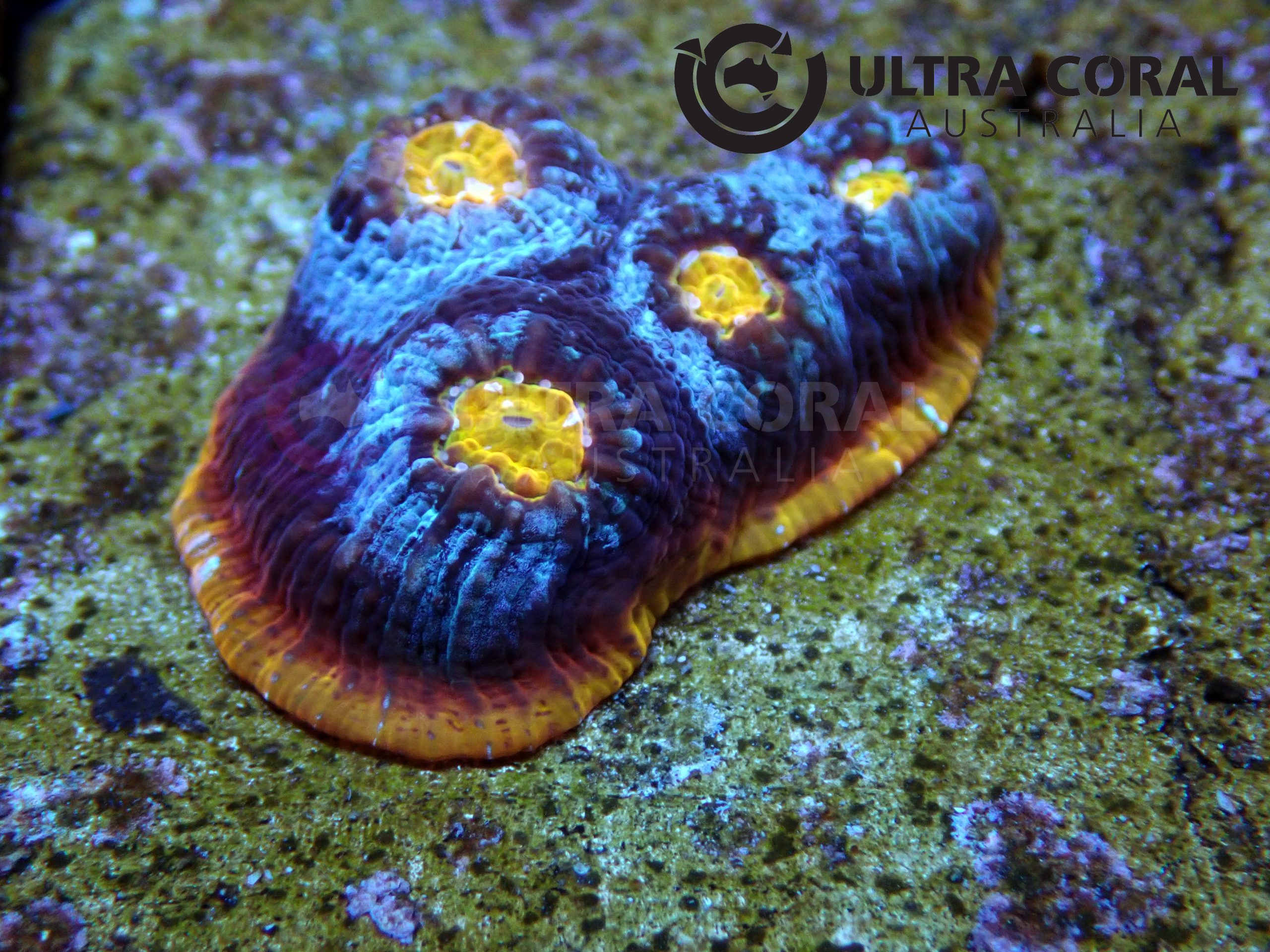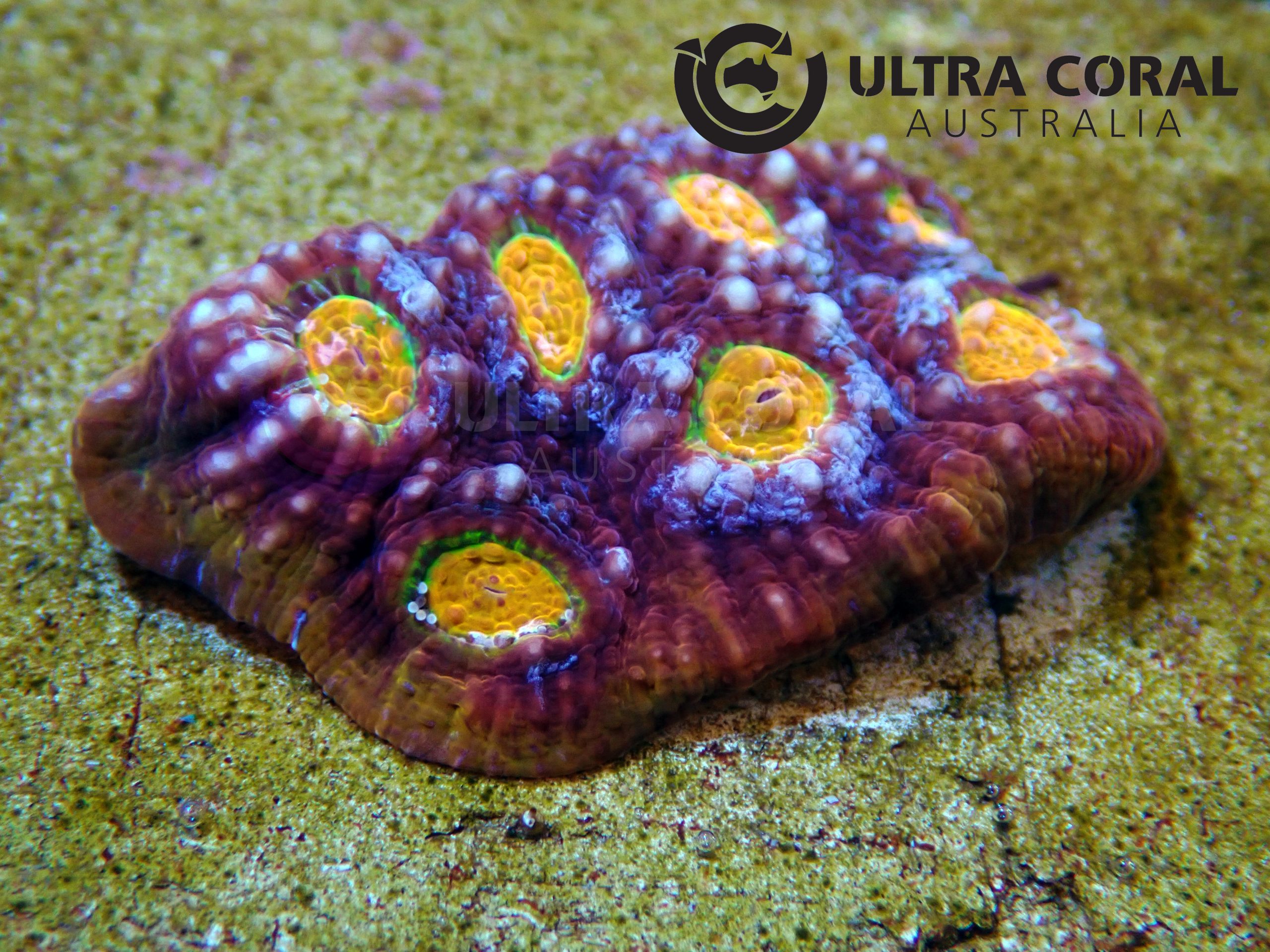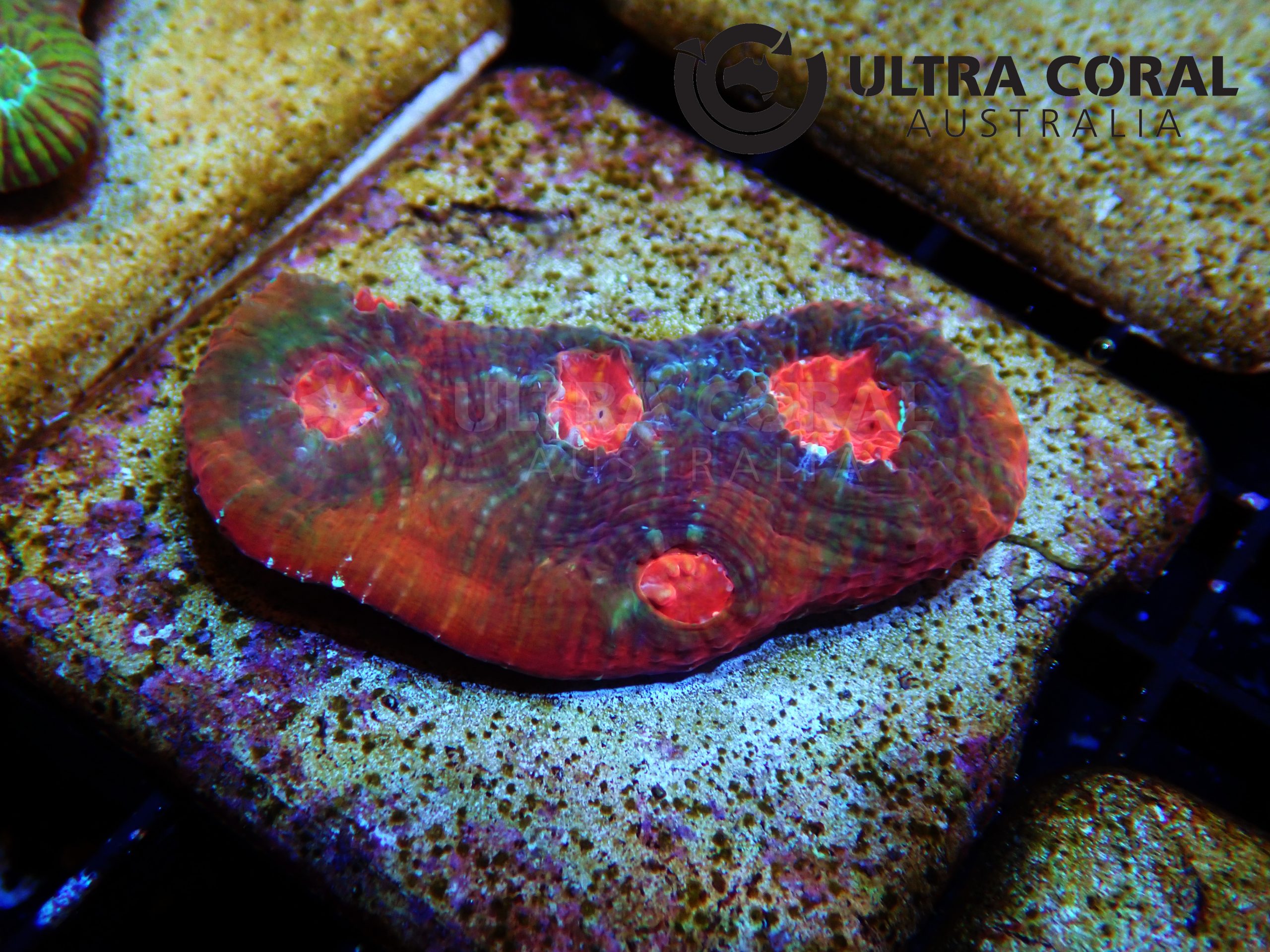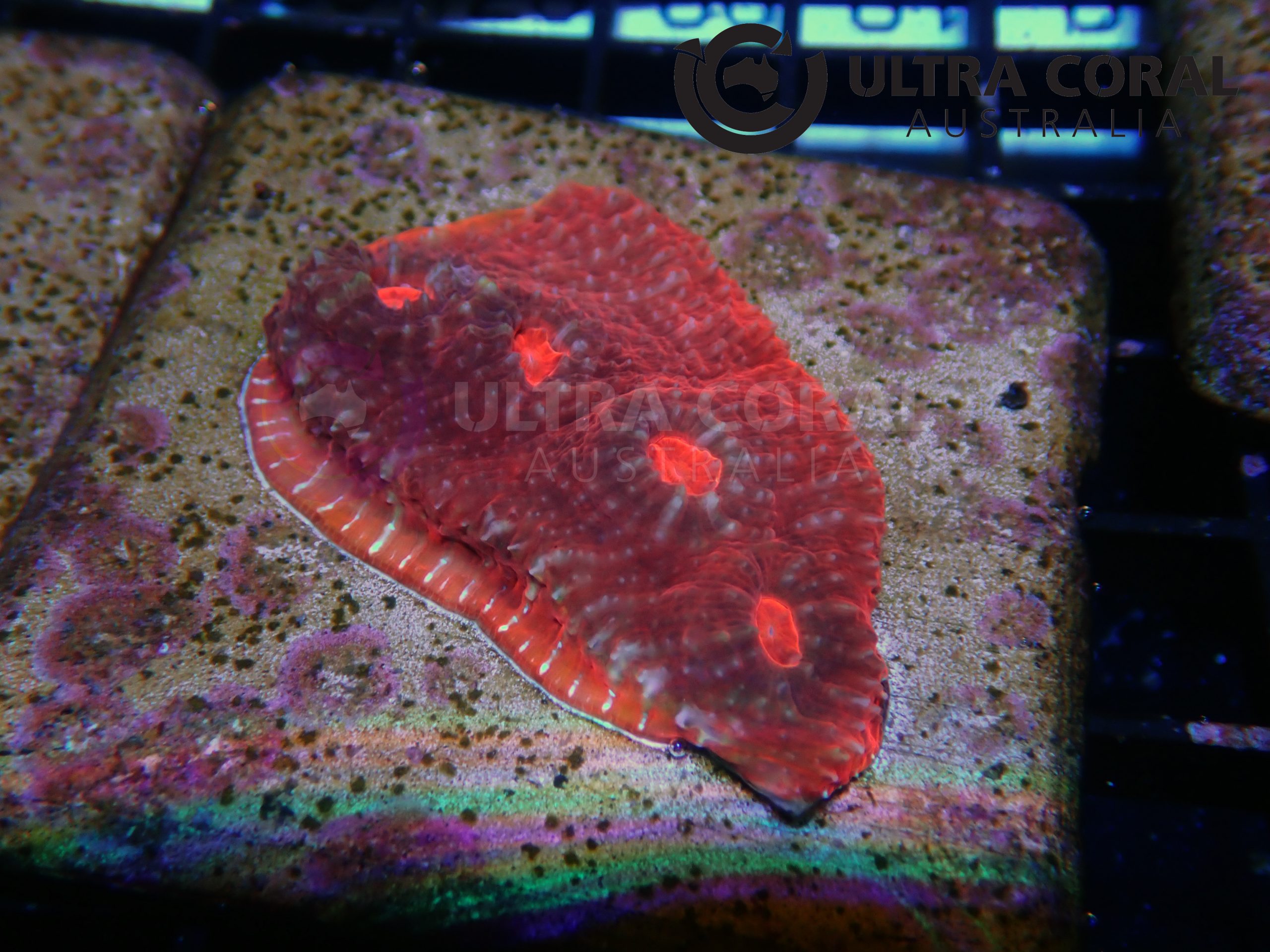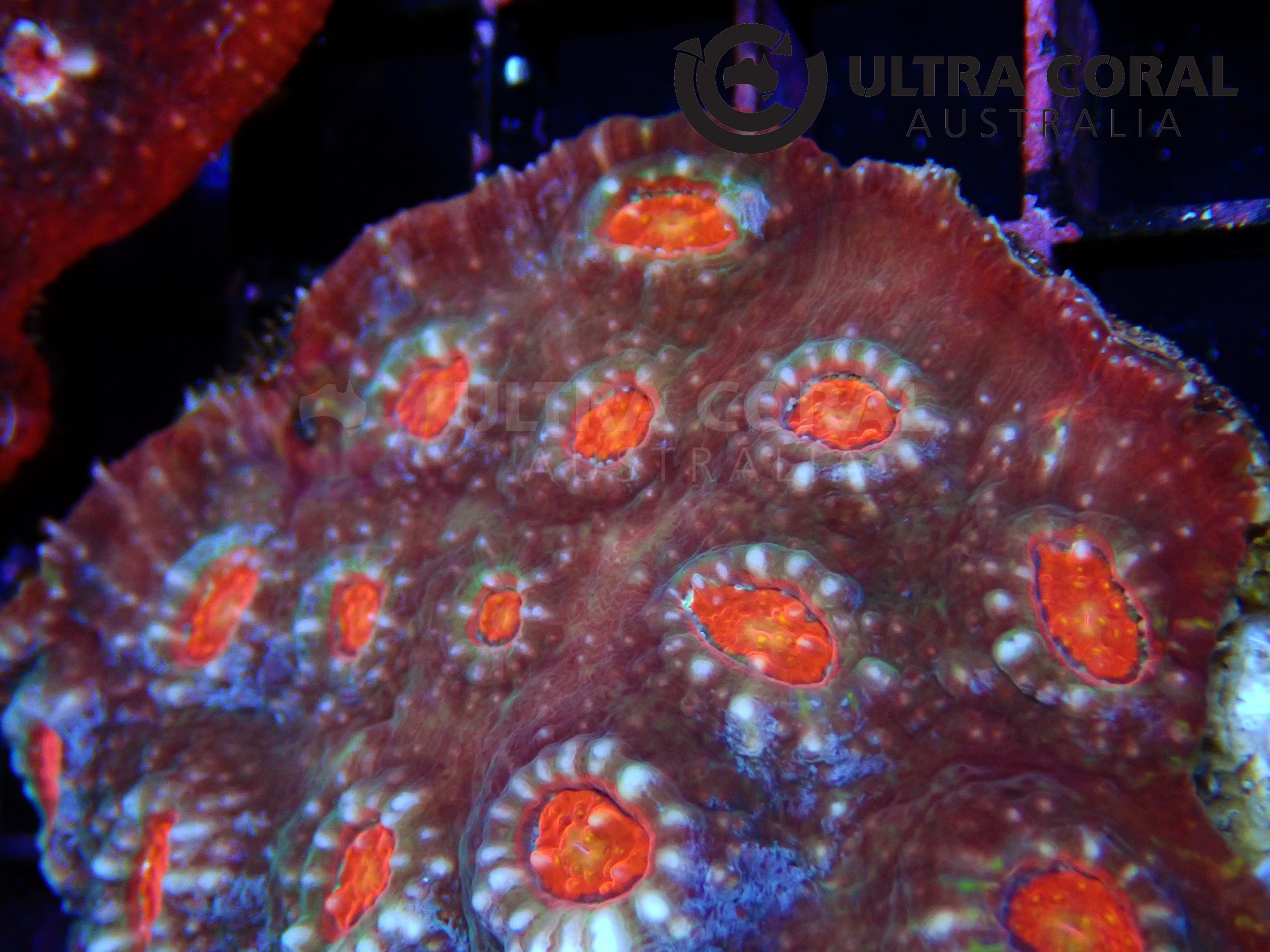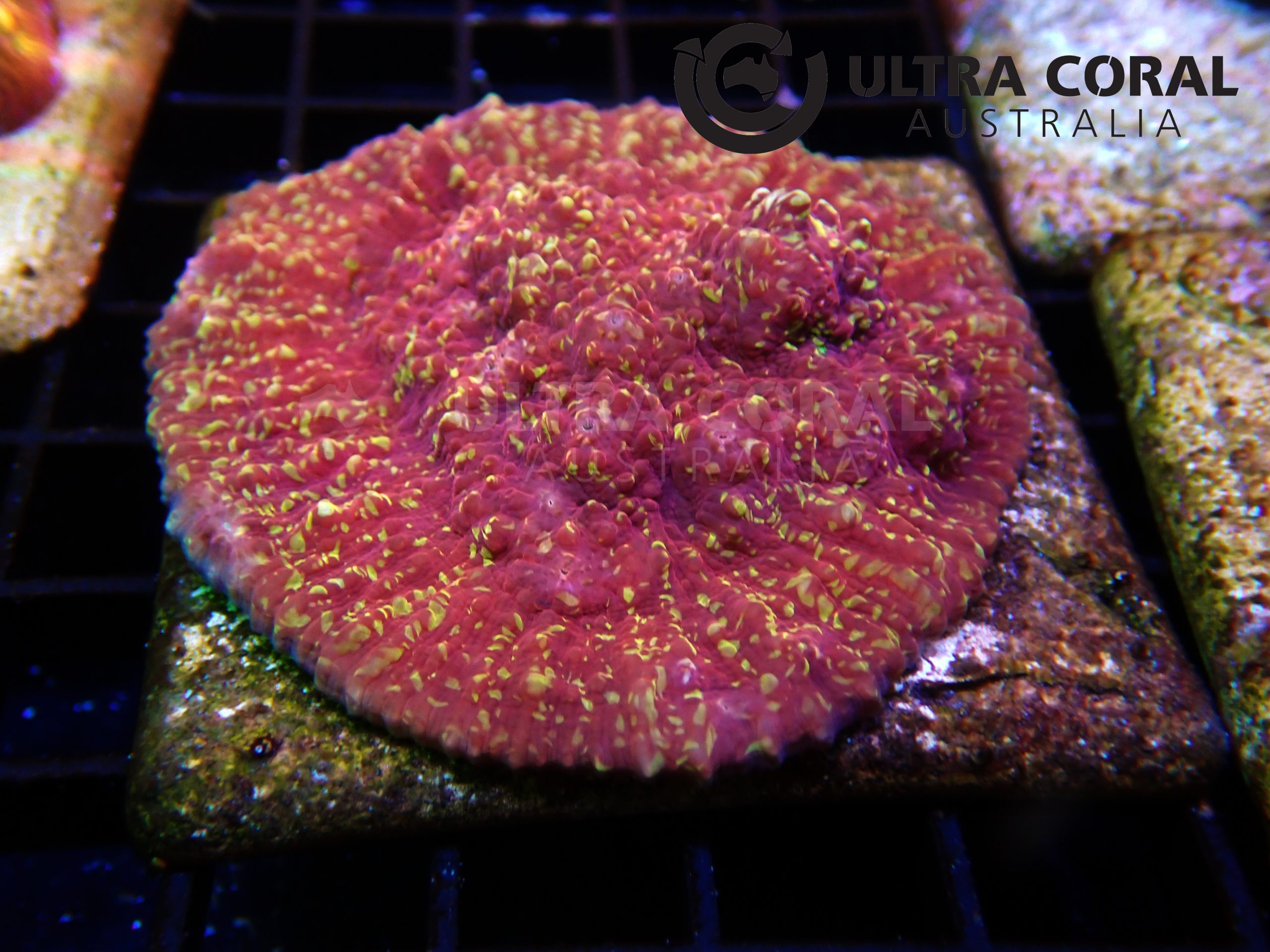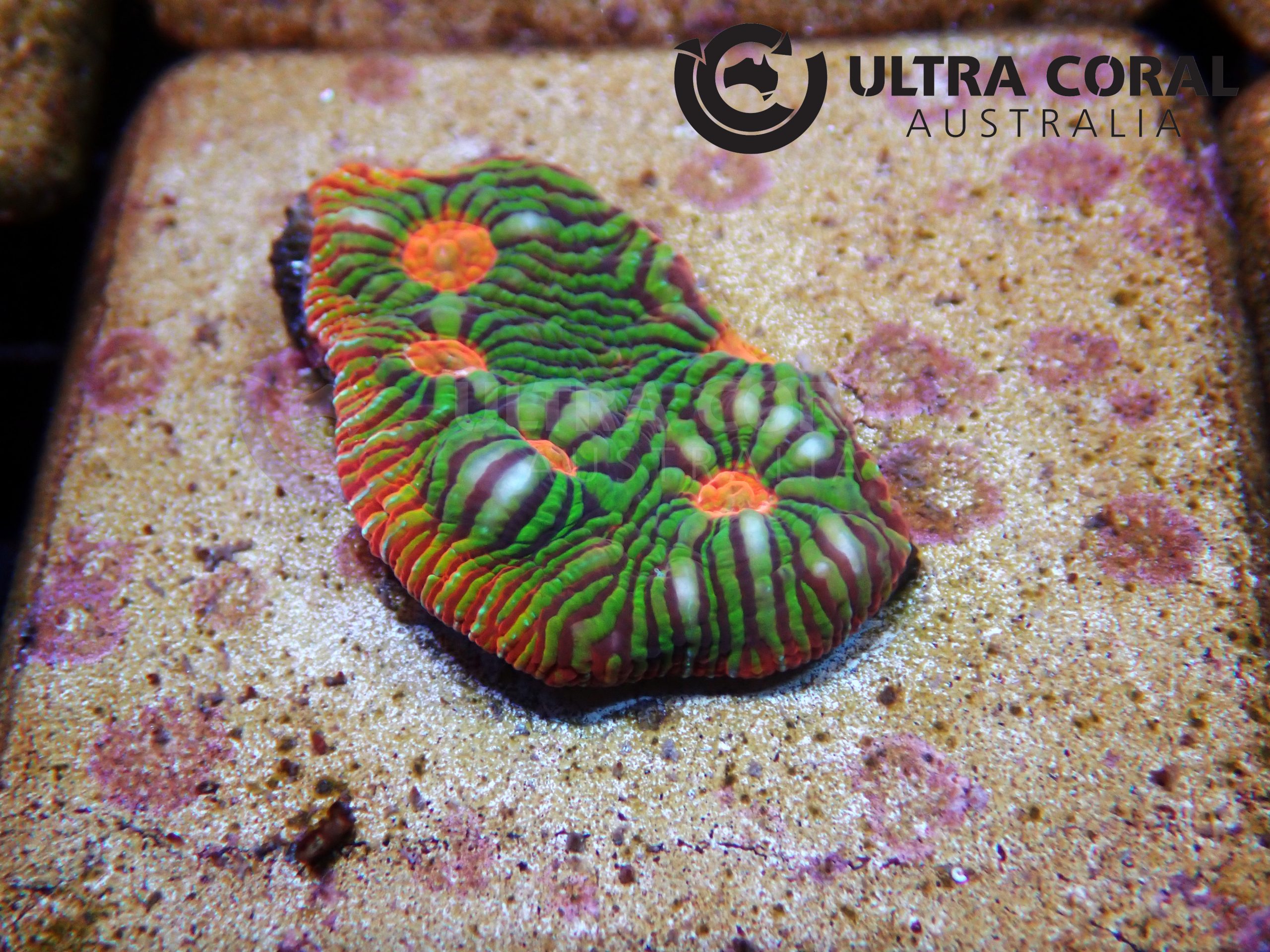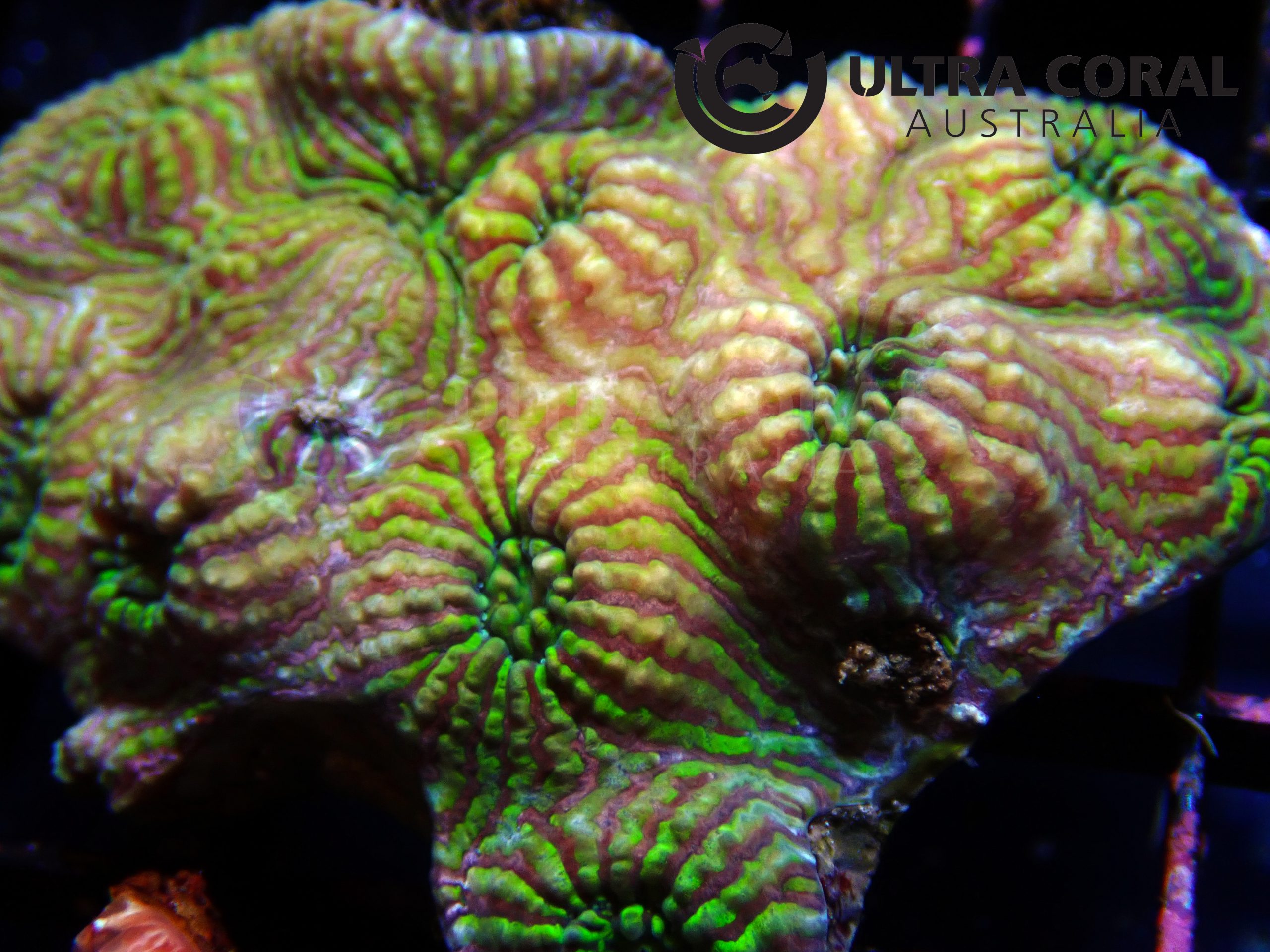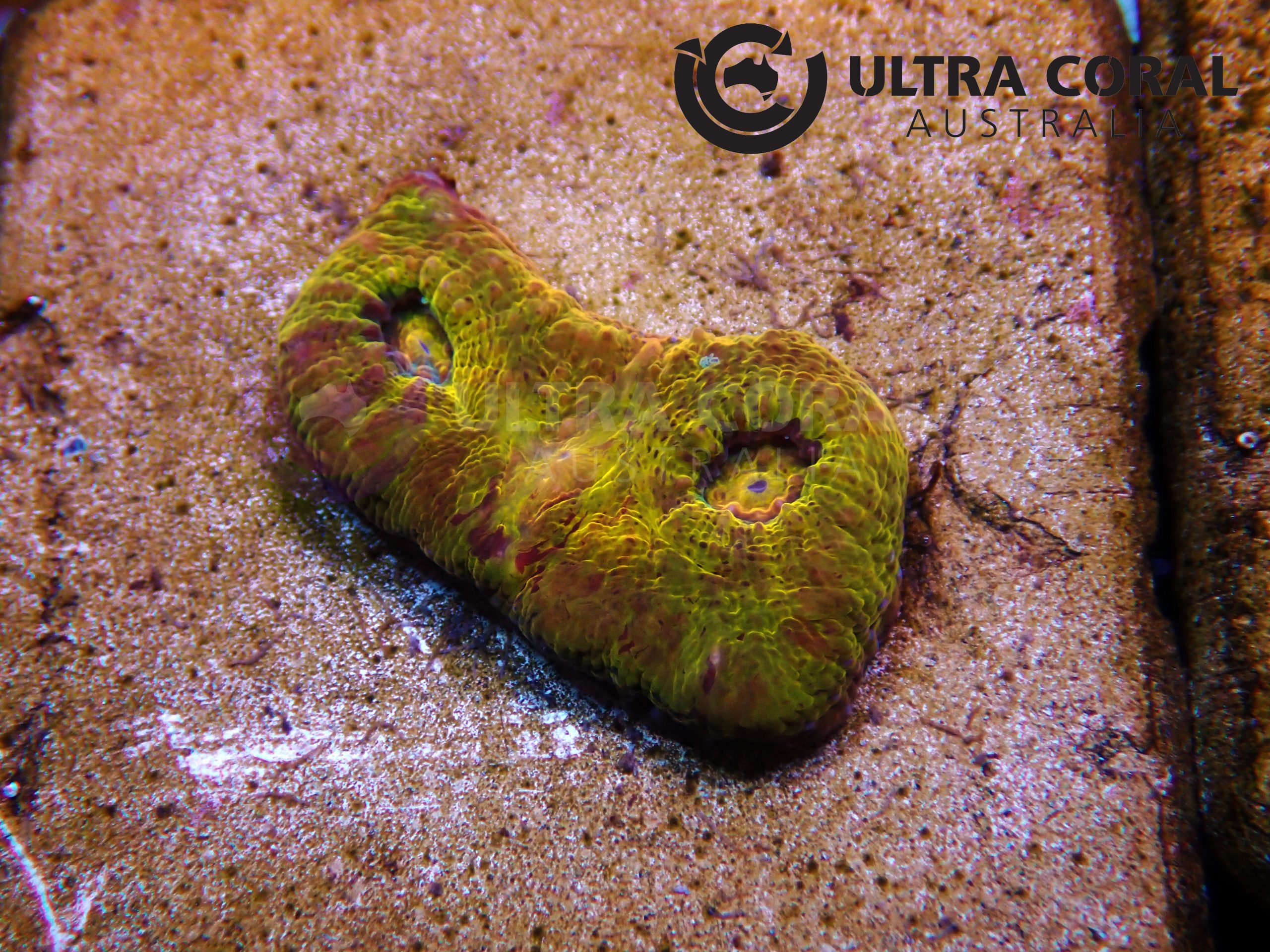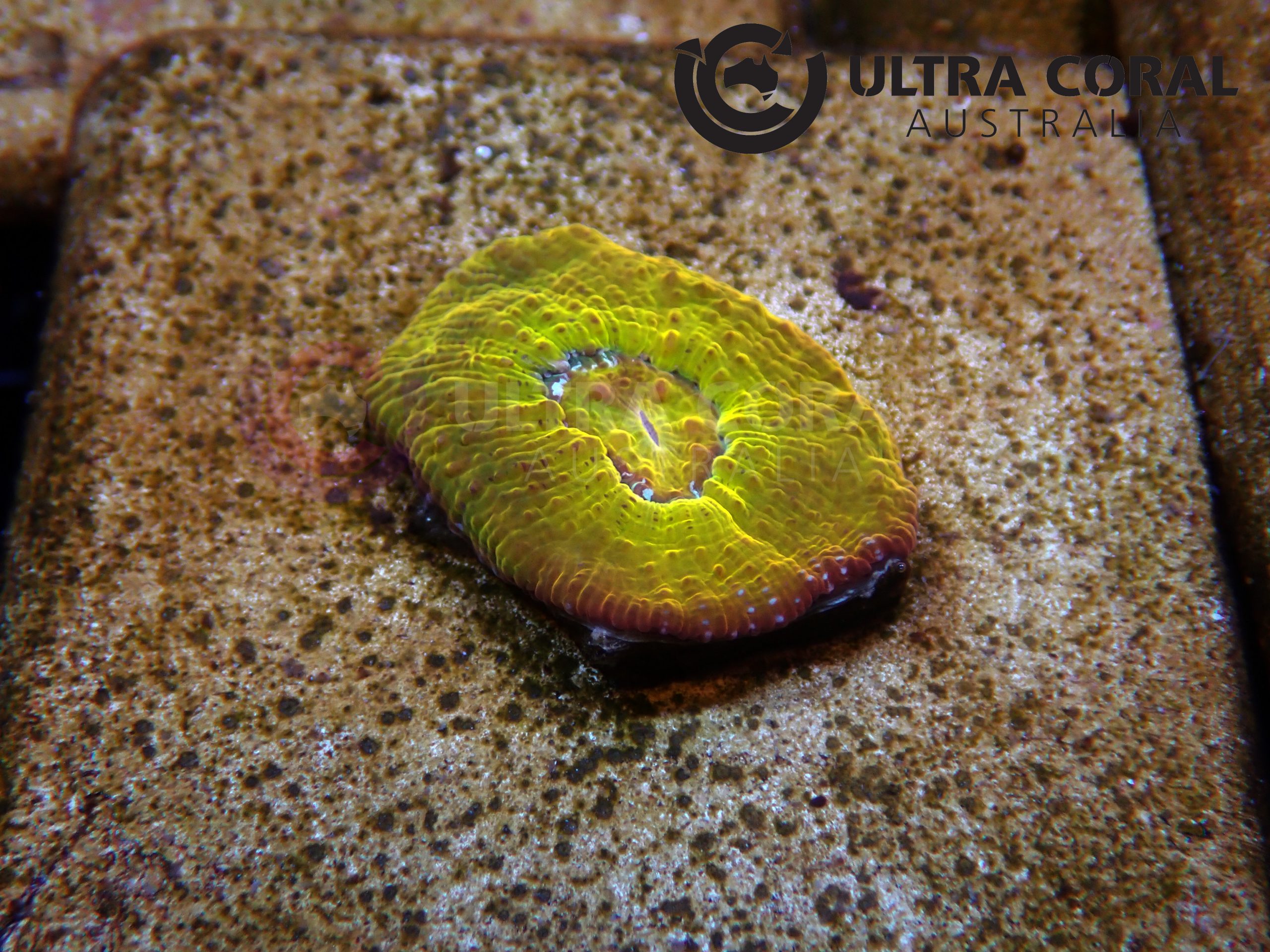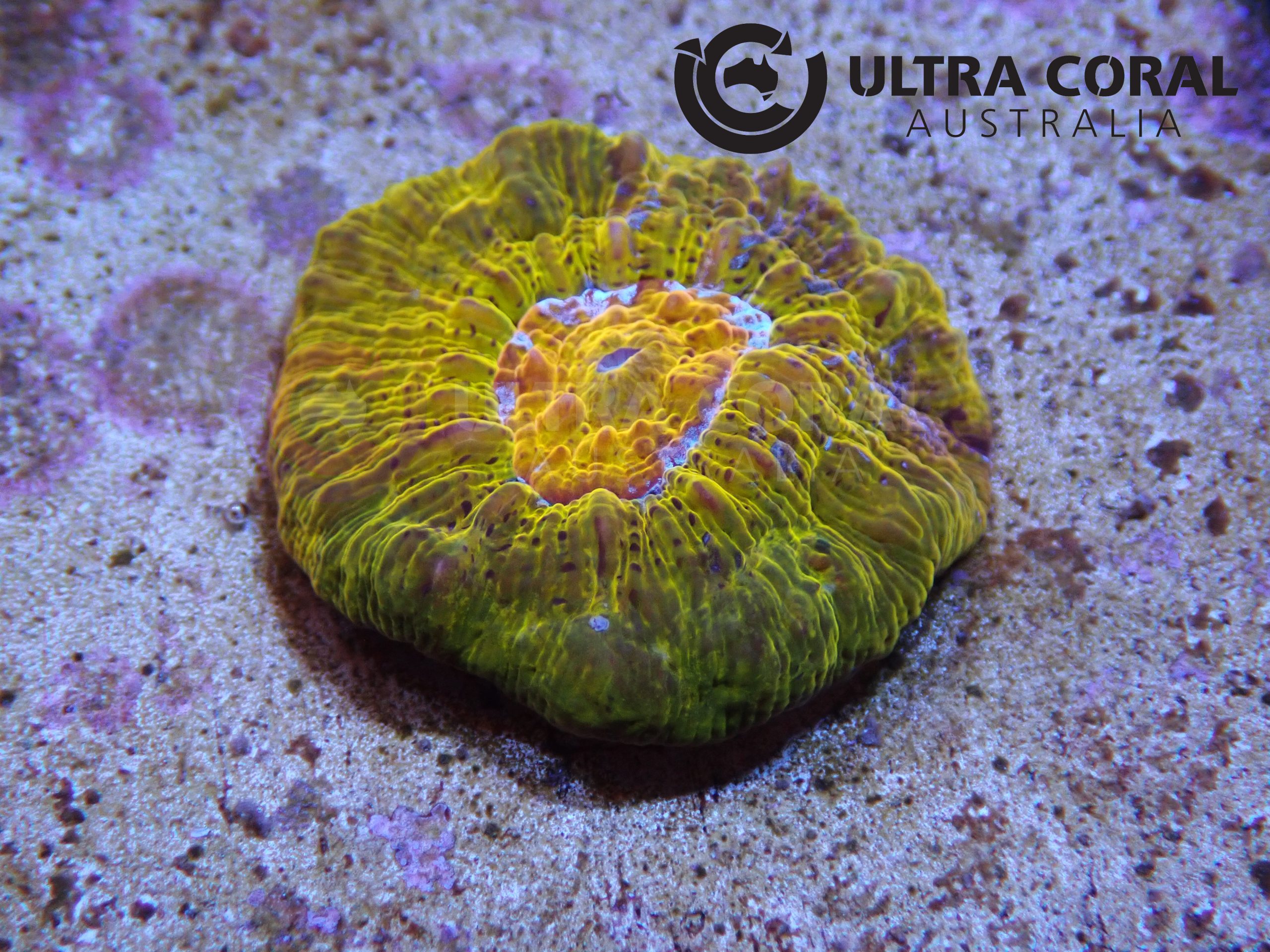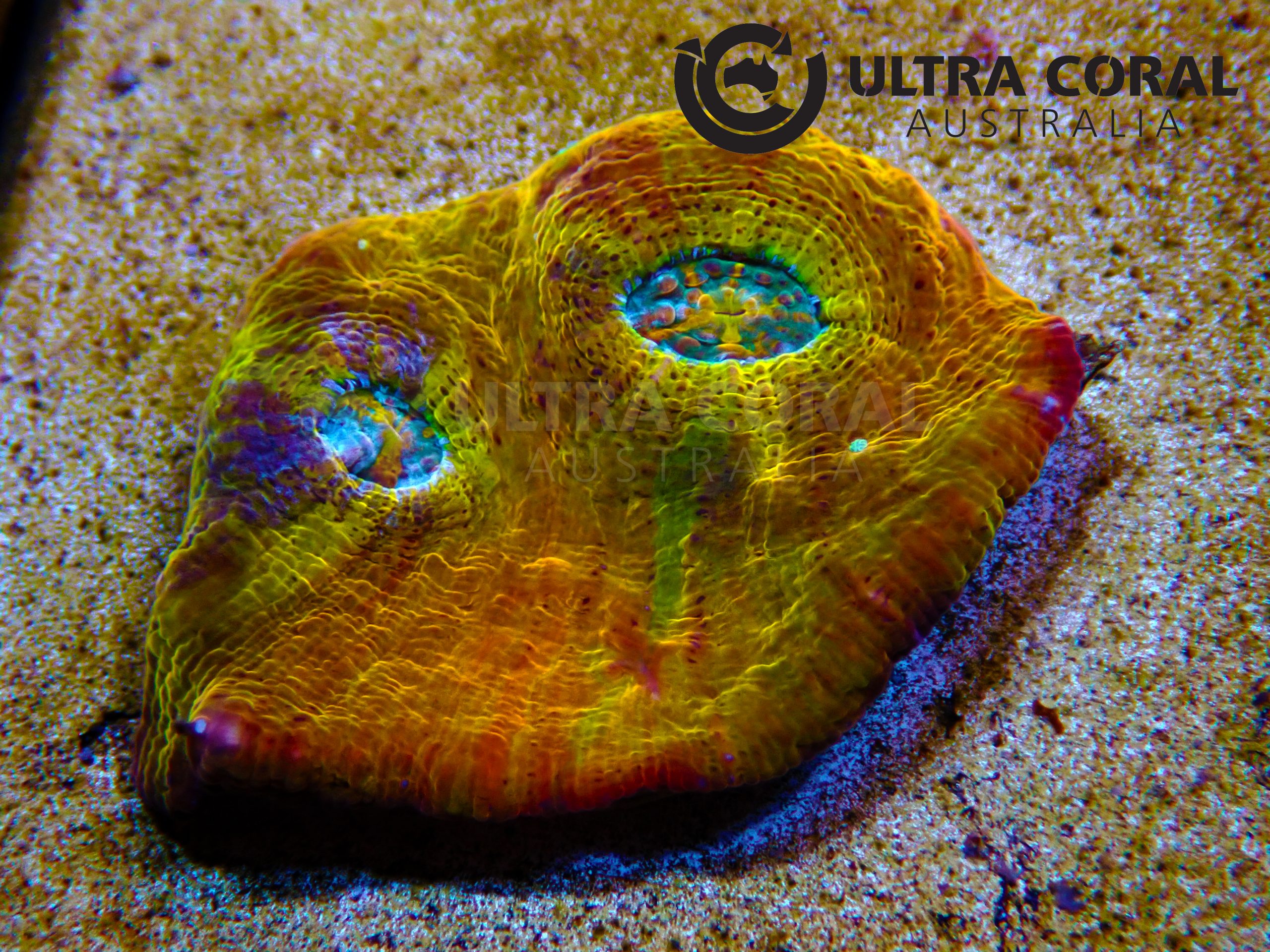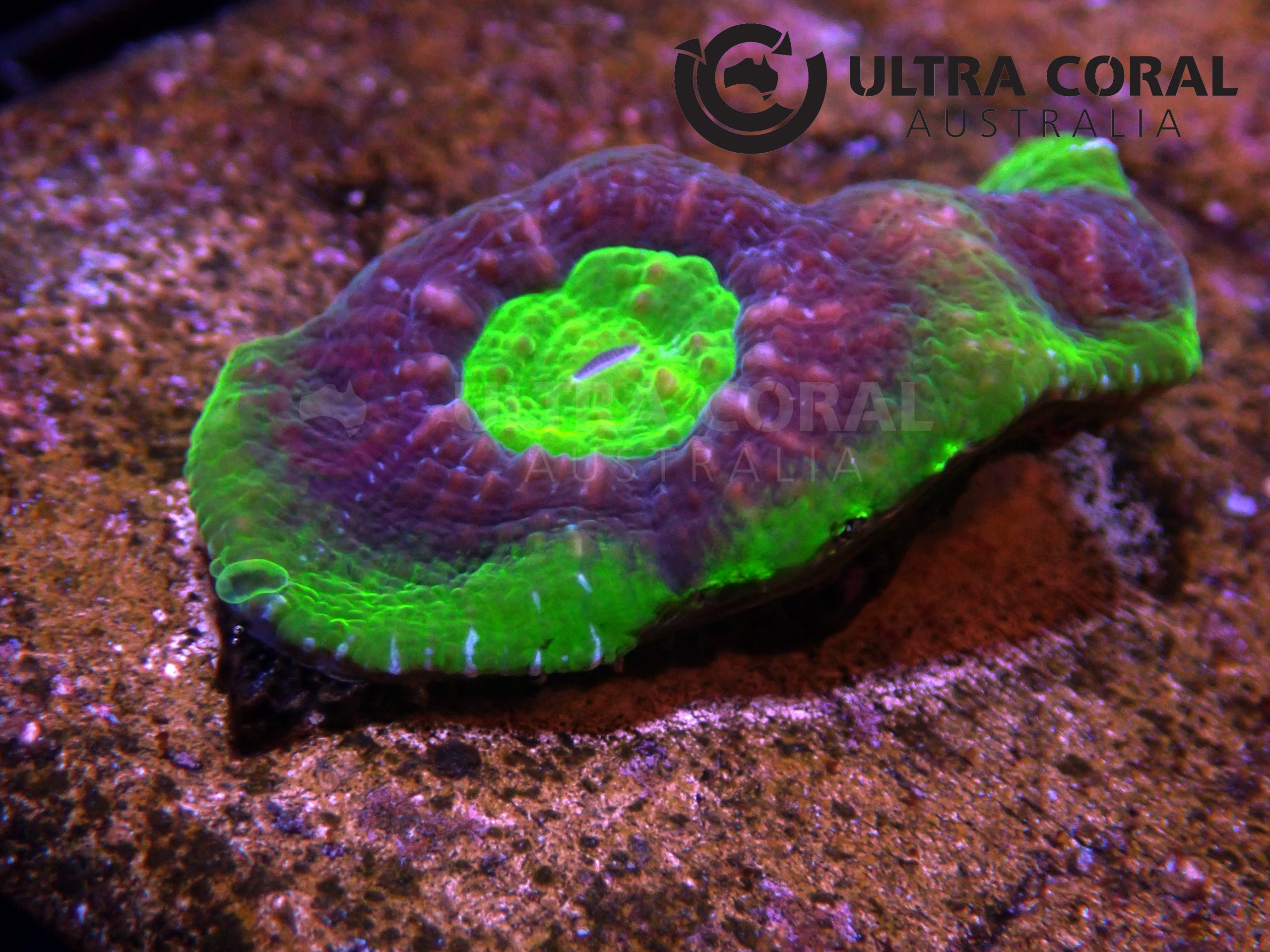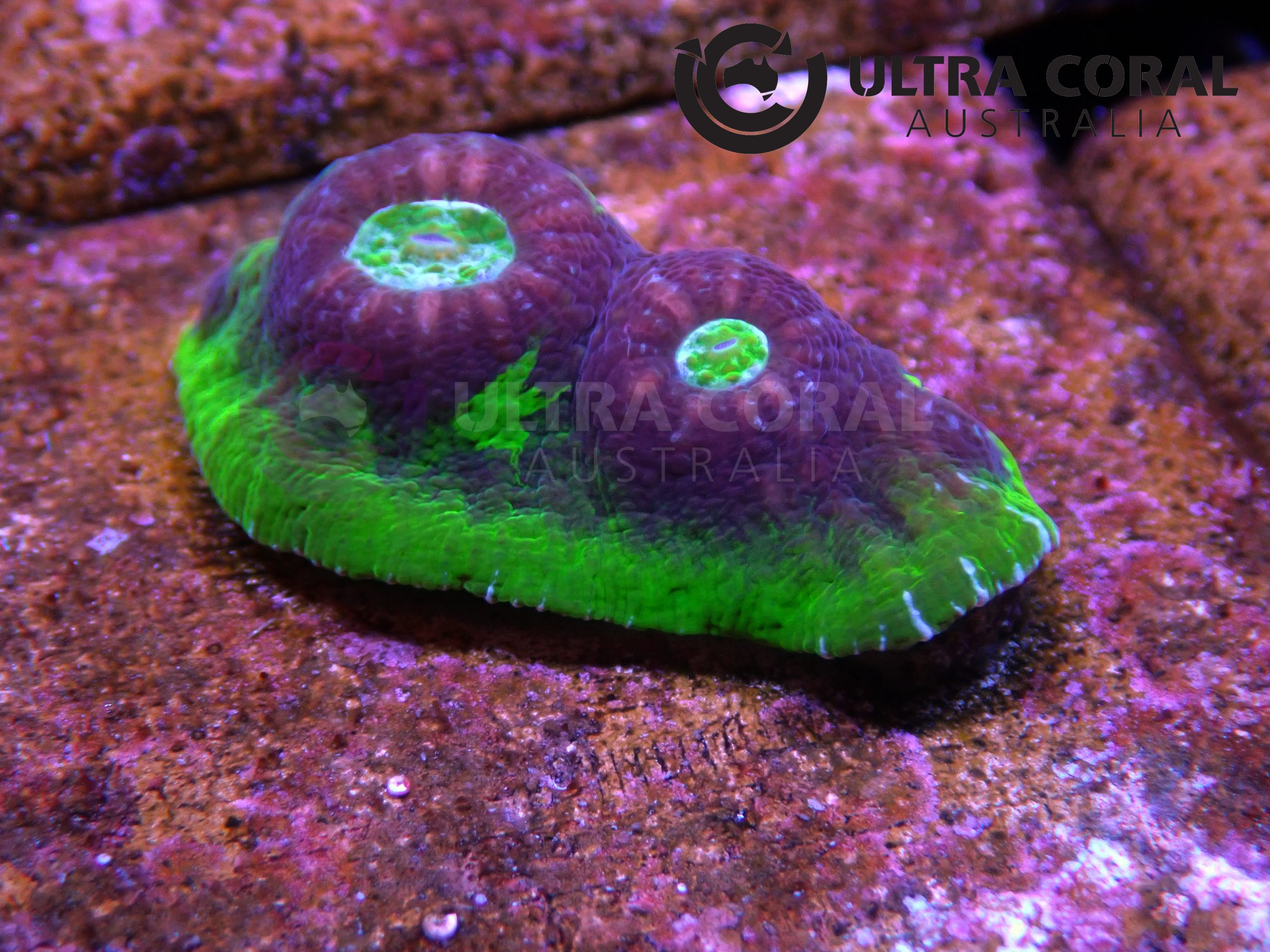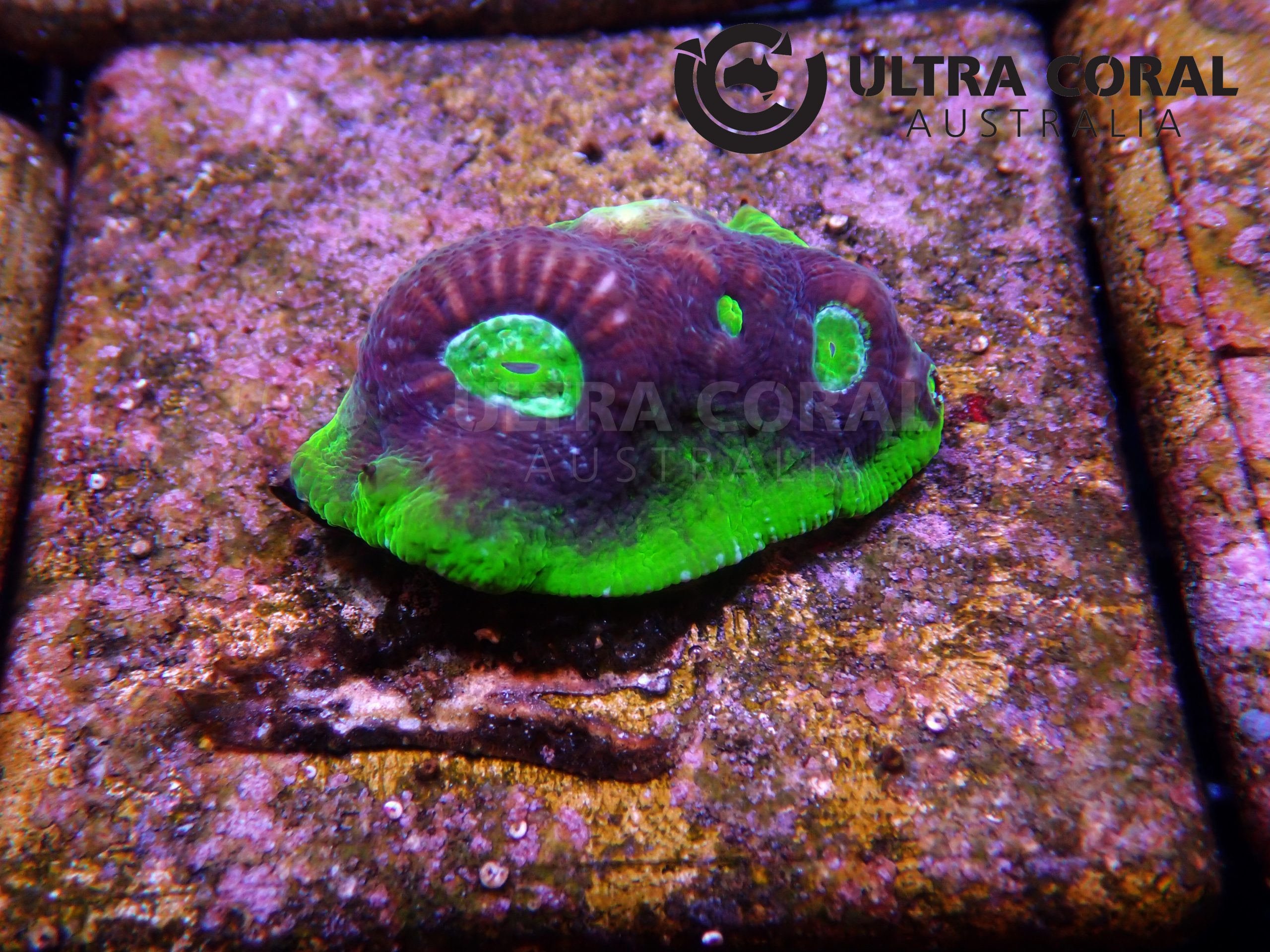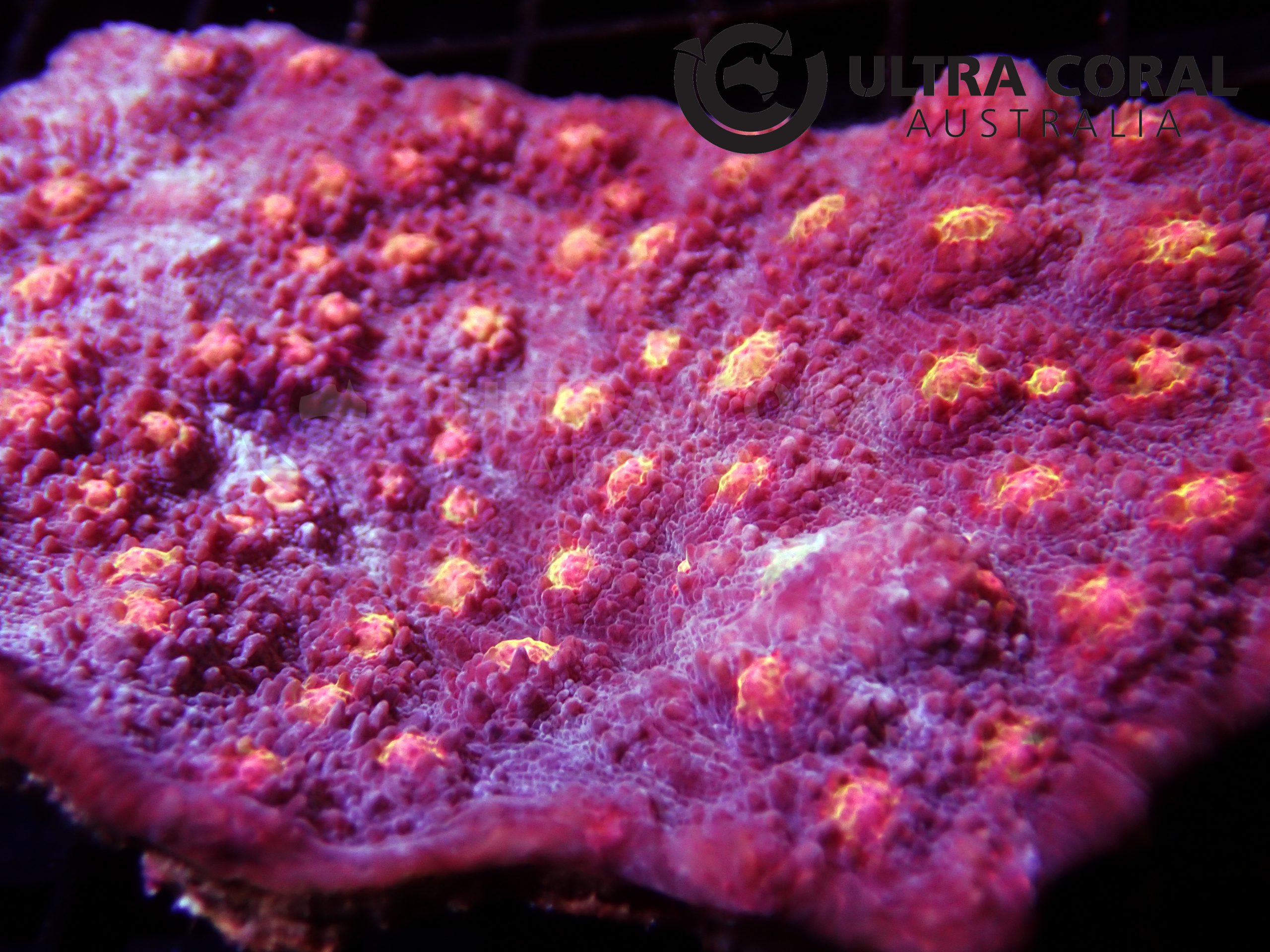Echinophyllia sp.

More commonly known as chalice coral, Echinophyllia is a popular aquarium species with a wide diversity of colours and shapes. However, the name chalice often groups together species of Echinophyllia, Mycedium and Oxypora.
Echinophyllia corals form encrusting, laminar or foliaceous colonies, typically encrusting to form cups or folds. The middle of the colony often contains a series of raised round bumps pointing in different directions which give a warty appearance.
Although some species of chalice have a less dramatic appearance with flatter colonies, small whirls, and slight bumps.
Chalice is recognized as a relatively hardy species, except for the outer colony perimeter where the coral is often delicate and prone to breakage.
During the night, Echinophyllia is seen to extend sweeper tentacles in order to feed and compete for space.
Most Echinophyllia species are widespread and common in their natural habitats. They can also be found in a wide range of colour variations, usually cream, grey, or brown with green or red centers. Sought after colour variations include the popular green and white striped convict chalice, the red mouthed after-burned chalice and the stunning gold and rainbow chalice.
Basic Water Parameters
pH
8.0 to 8.3
Salinity
34 - 36ppt
Temperature
24.0 - 26.0 Celsius
Husbandry Requirements
Lighiting
50-100 PAR
Flow
Some turbulence required
Aggressiveness
Has long sweeper tentacles and/or strong stinging ability that can damage most other corals.
Acclimation Guide
- It is highly recommended to acclimate all corals to a new environment to prevent shocking corals.
- Place the corals in the water from the packing bags and slowly add the water from new environment (Dripping method is recommended).
- Use the water parameter above as a guide.
- When the vessel becomes full , replace the water with the new environment water by a small amount at a time.
- Ensure the water temperature matches with the new environment’s water.
- After the corals have spent adequate time in the acclimation water, gently place the corals to a new environment.
- It is recommended to place new corals under lower light intensity than usually required. Once corals show no signs of stress, it can be moved to higher lighting area gradually.”

